
































































































Are you as amazed as I am that it is 2023? Whatever happened to 2020, 2021 and 2022? Oh, yeah, we had that pandemic thing that cancelled, postponed or otherwise changed our lives in ways we may not yet understand.
Last year, at the annual Farm Show in Harrisburg there were not many fans in the arena. The 2023 edition should have crowds of people to cheer on their favorite participants. Mary Bernath recently spoke with several competitors as they were finalizing their preparation to compete in Farm Show events. From apple pies to Amy Snover’s Percheron horses, competition at the state’s highest level requires hours of work required before the actual competition takes place. By the time you read this, many of the competitions will have already taken place. I think you’ll enjoy reading about how they won those ribbons!
The Susquehanna River Valley Visitors Bureau, located on Route 15 in Lewisburg, is one of 50 bureaus in Pa. Since 2006, Andrew Miller has guided the Valley bureau that serves Northumberland, Snyder and Union counties. Bureaus shine a light on the businesses, events, and destinations in their area — encouraging visitors, event planners and “locals” to enjoy what makes this region extra-special.
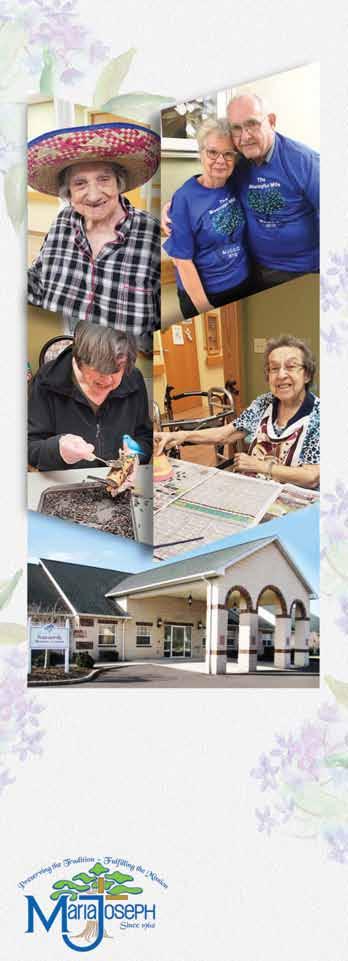
January is an interesting month, isn’t it? It’s always cold, so if you love skiing, snowboarding or sledding, this is your season. Lisa Leighton has explored the preparations — fitness, outer wear, and nutrition — that will make your visit to your favorite ski resort or the highest sledding hill near your house extra fun!
Valentine’s Day is just a month away. Have you ever wondered why, in one of the coldest months of the year, we give flowers as a token of affection? We’ll try to answer that question for you. Since our story will make you wonder about where to buy flowers, we have added a list of sources. Five florists will have shared their advice about celebrating the holiday. Don’t forget to shop locally if you can!
February is when we celebrate President’s Day. Lincoln and Washington are the honorees because their birthdays are February 12th and 22nd. On page 36, you will find a crossword puzzle to test your knowledge of our 1st and 16th presidents.
Although January has been underway for ten days, please allow me to wish you and yours happiness and health in 2023.
PA



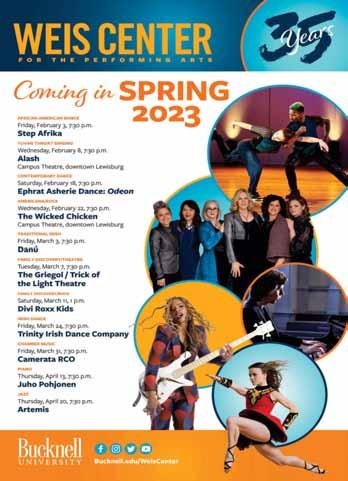












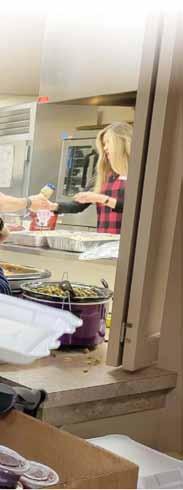

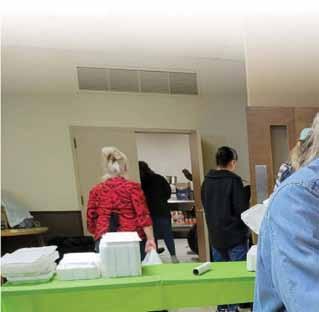
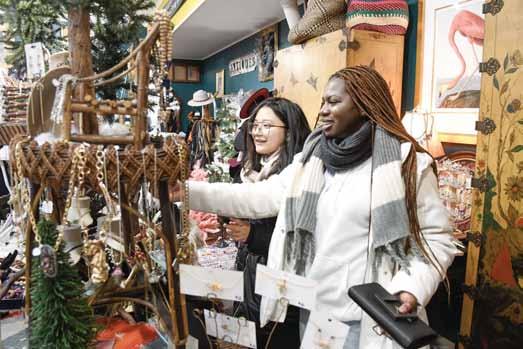


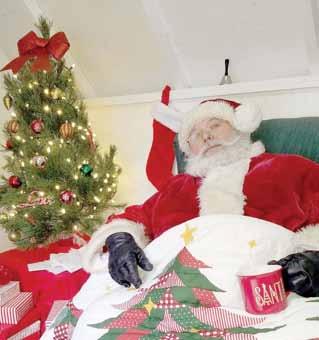





































The Roman god of beginnings, Janus, also known as the protector of gates and doorways, gave January its name. In the ancient calendar, the first two months were not named. They were considered dormant — for fields and soldiers. It was a time of peace. January is the first of seven months of the year to have 31 days.




Februalia was a month-long festival of purification and atonement from the Latin word februa which means to cleanse. It is the only month to have fewer than 30 days, February begins with the Lunar New Year and is followed by many celebrations. Black History Month is celebrated throughout February.





























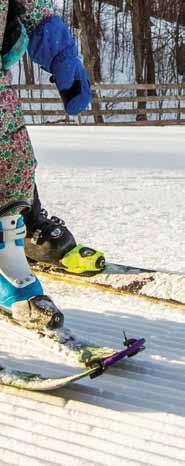
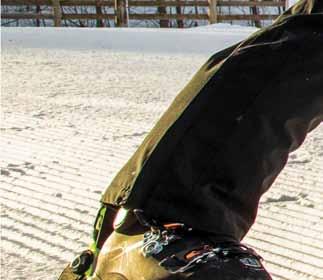

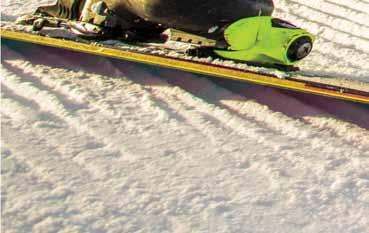





 Story by Lisa Z. Leighton
Story by Lisa Z. Leighton
If you’re new to skiing — or snowboarding — getting started can be a little daunting. How do you condition your body for activity? Where are the best places to hit the slopes in and around the Valley? What equipment do you need? What foods help the body maintain optimal energy?
Three experts weighed in on these important topics: Dr. Matt McElroy, Sports Medicine Doctor at Geisinger and U.S. Ski Team doctor, Bill Davenport who owns Ski Valley in Danville, and Kimberly Crisswell, nutritionist and dietitian at Evangelical Community Hospital.
As a full-time Sports Medicine physician and traveling doctor with the U.S. Ski Team, McElroy has seen his fair share of skiing-related injuries, many of which could have been avoided.
When traveling with the team in countries like Sweden, Norway, Finland and Switzerland, he said, “They’ll travel from location to location, so you take care of whatever they need. It could be anything from breathing issues to basic issues like joint, tendon or muscle problems.”
For casual skiers, McElroy said, “knee injuries are the most common orthopedic condition, as well as shoulder and wrist injuries and muscle strains.”
He said the most important thing novice skiers can do is condition their body on dry land — long before heading to the slopes.
If you’re thinking about going to Montage or one of the local ski areas this winter, it’s best to start getting your body in shape before you go, he said, Strength training, such as resistance training for large muscle groups like quadriceps and hip muscles, and starting to build your
aerobic fitness are the places to begin.
“You really don’t want to wait for the day and decide, ‘Oh, I’m gonna go ski all day and hope for the best.’ But some people don’t appreciate or remember that,” McElroy said.
He continued, “It’s a pretty aerobic- and physicallydemanding sport. If you ski a full day, you can wear your body out. Not all injuries, but some injuries are at least partially preventable if you really prepare your body with strength conditioning before the season.”
McElroy noted that simply taking five minutes to stretch and warm up major muscle groups can be immensely helpful to injury prevention.
McElroy and Ski Valley owner Bill Davenport praise the many local slopes that Central Pennsylvanians have access to including: Montage Mountain, Ski Sawmill Resort, Camelback, Shawnee Mountain, Jack Frost and Big Boulder to name a few.
McElroy said, “Kids can learn to ski at Ski Sawmill. I like it because it’s quiet, family-run and not that crowded. As the kids want a little more terrain, Montage is a nice spot.”



“IT’S A PRETTY AEROBIC AND PHYSICALLY- DEMANDING SPORT. IF YOU SKI A FULL DAY, YOU CAN WEAR YOUR BODY OUT. NOT ALL INJURIES, BUT SOME INJURIES ARE AT LEAST PARTIALLY PREVENTABLE IF YOU REALLY PREPARE YOUR BODY WITH STRENGTH CONDITIONING BEFORE THE SEASON.”DR. MATT MCELROY, SPORTS MEDICINE DOCTOR AT GEISINGER AND U.S. SKI TEAM DOCTOR
Davenport, who started his bike, ski, and skateboard shop 50 years ago, said he prefers Elk Mountain because it has good terrain, good snow quality, and usually isn’t as crowded.
In addition to pre-conditioning the body, Davenport said that well-fitted boots and a properly-fitted safety helmet are essential to skiing safely. Ski Valley fits Dalbello, K2 and Roxa boots and specializes in safety helmets, weather-resistant clothing, ski gear, and of course skis and snowboards. A variety of skis by K2, Rossignol, Elan, Volkl and several others are available. Making sure that height, weight and ski style are considered for each customer is important. At Ski Valley, a highly-skilled service department specializes in ski gear maintenance, plus bike wheel building, suspension, and custom builds.
Once you’ve conditioned your body, secured proper equipment and clothing, and decided what ski slope best suits your needs, it’s time to pack healthy, energysustaining snacks.
Kimberly Criswell, a Dietitian/Nutritionist with Bariatrics of Evangelical said, “When traveling, it’s convenient to have healthy, shelf-stable or pre-packaged snacks packed or to arrange for a grocery delivery after you arrive. I like to travel with bottled water, nuts, dried fruit, roasted chickpeas or soybeans, and whole grain crackers. I arrange for a grocery delivery or purchase of fresh fruits, hummus, baby carrots, and yogurt after arrival.”
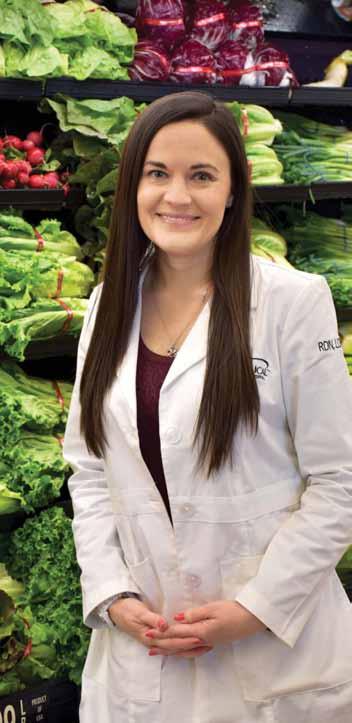
She recommends packing water or hot tea for hydration, fruit, whole grains, and yogurt for carbohydrate intake, hummus or roasted soybeans (soynuts) for slow-digesting carbohydrates and protein. She cautions that simple carbohydrates in liquid form, like fruit juice, will give energy quickly but could also cause a spike in blood sugar.
While many people will pack high-protein bars, Criswell said, “I encourage people to be cautious about foods with a large amount of sugar or fat added because they might contain more calories than can be burned during a session of activity.”
She said that in general, 60-90 grams of protein per day will be sufficient for most people. Endurance activities increase carbohydrate needs, because that is the main muscle fuel. Carbohydrate needs increase by approximately 15 grams per hour for moderate intensity activity and 30-50 grams per hour for high intensity activity.
McElroy said, “In Pennsylvania, (in the winter) we get gloomy and not-so-pleasant days, and it’s hard to go out and do some of the outdoor things you would normally do. Skiing is one of the few things that has a controlled place for you to go get some exercise. It is a sport that people can participate at almost any age, from 2 year old to 82; skiing is pretty forgiving on your joints. It’s a nice community activity that can be shared with family or friends. Cross country or downhill skiing are two of the underutilized recreation options in Pennsylvania.”



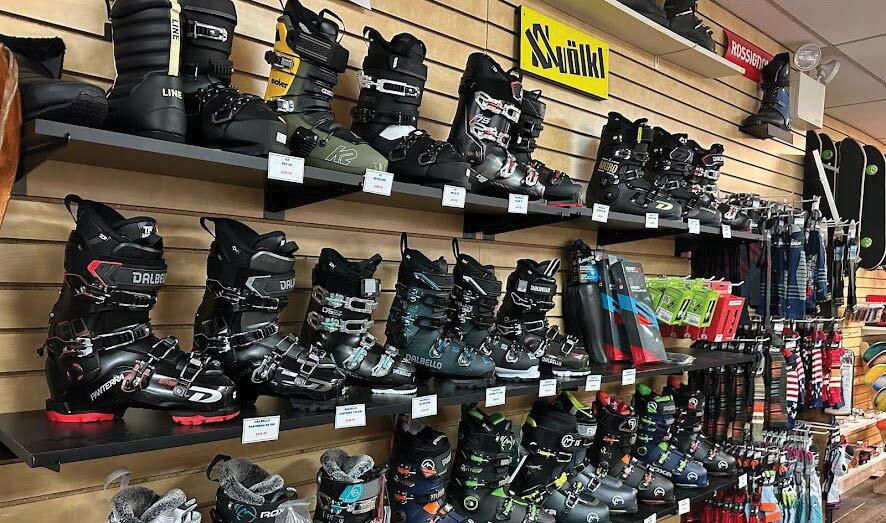

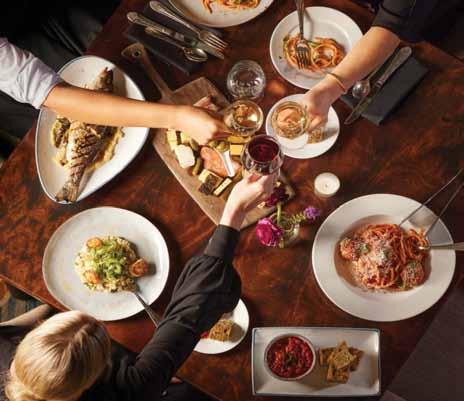








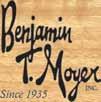





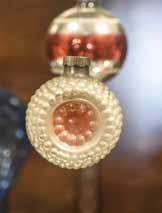







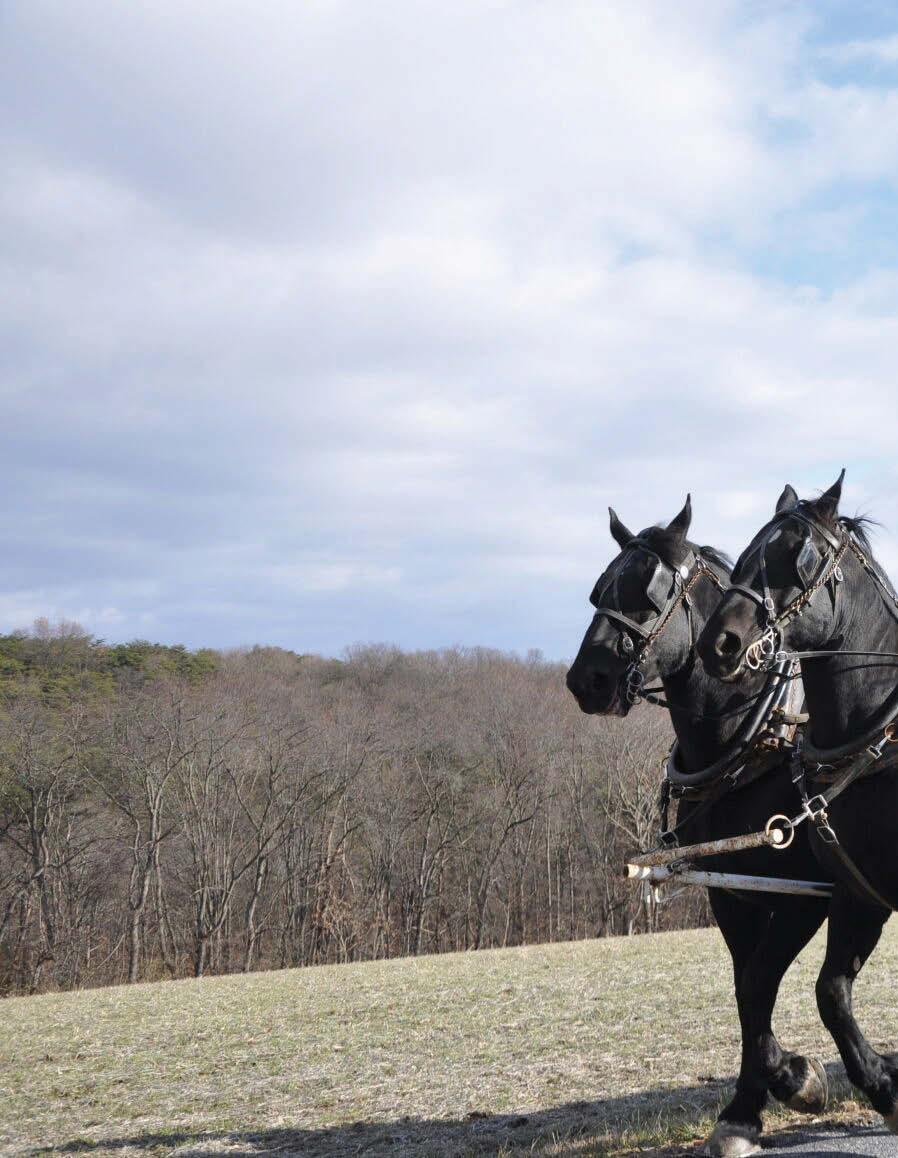

Come one, come all, to The Pennsylvania Corn, Fruit, Vegetable, Dairy Products, and Wool Show.


That’s what the Pennsylvania State Farm Show was called when it opened its doors in January 1917 for the first statewide extravaganza. The 2023 Farm Show, being held this week from Jan. 7-14, is the 107th of these shows. Back in full force this year after going virtual in 2021 and scaled down in 2022 for COVID, the PA Department of Agriculture organizers are expecting to welcome countless exhibitors and visitors to the “largest indoor agricultural event in the world.”
On a site that covers nearly one million square feet in eight major halls and three arenas, the Farm Show usually attracts about a half a million visitors each year. That’s hard to measure precisely with free admission, so the organizers count parked cars and make a best guestimate. The Farm Show Complex is located in Harrisburg at 2300 N. Cameron St.
by Mary BernathThe PA Farm Show is part state fair, where farmers and 4-H’ers throughout the state can compete for Blue Ribbons, and part agricultural exhibition, where non-farmers can learn all about what Pennsylvania’s farmers do. It does a good job of promoting “awareness of agriculture,” said dairy farmer Bob Hauck of Troxelville. Back when he showed dairy cows there, he was always amazed at “how much people don’t know about what farmers do.”

Everyone wanted to touch his cows and asked a lot of questions. They were surprised at how warm the cows felt, with a body temperature of 101.5°. And they were “blown away” by how much milk an ordinary cow gives and surprised to learn that farmers don’t milk cows 24 hours a day.
Now that his kids are grown and he’s no longer taking animals to the fair, Hauck seldom goes. He finds that it’s aimed not so much at the farmers as at the consumers of farm products. “It’s pitched to John Q. Public,” he said, “and that’s not a bad thing. It’s especially nice for the city people who have no direct connection to the farm.”

Katherine Rapp, a 4-H member from Shamokin Township who is showing sheep at the Farm Show and riding rodeo, likes that aspect of the Farm Show. “I really enjoy talking to the public,” she said. “It’s good to spread what we do.”

Rapp has been hard at work these past months preparing for the Farm Show. She has walked her market sheep every day, whenever possible, to get them ready to show, and she has worked with the breeder sheep as well on her family’s farm.
Katherine and her younger sister Amanda are also competing in the high school rodeo events at the Farm Show. For that, they have practiced with their horses every day they could at their grandmother’s farm, Katherine’s best event is the pole bender, a sort of slalom on horseback. She also does barrel racing, goat tying, and calf roping.
With the sky getting dark at 5:30 p.m. or earlier these days, it’s been hard to get enough practice time after school, so Katherine has had to alternate between riding horses and working with the sheep to take full advantage of the limited daylight hours available.
Rapp says showing sheep at the Farm Show is very similar to competing at the Bloomsburg Fair, just on a larger scale. Her family is taking 10 breeding sheep, two market sheep, and one heifer to the show for judging.
Local farmers and craftspeople from throughout our area have been practicing and preparing for the Farm Show for months now. From baking, to spinning and weaving, to square dancing, to riding rodeo, to driving draft horses, they have been perfecting their crafts.
Mary Carol Hess, of Rush Township, Northumberland County, will take her baked goods to Harrisburg — an apple pie, a chocolate peanut butter cake, and an angel food cake. To qualify for the Farm Show, a baker must already be a first-place winner at one of the 70 fairs held across the state during the year.
In August, Hess took first for her angel food and chocolate cakes at the Montour-DeLong Fair and a first for apple pie at the Northumberland County Fair. She also won a Blue Ribbon for Best of Show in baking at the Northumberland Fair.
“I love the smaller fairs,” she said, “especially the Northumberland and the Montour-DeLong. They always make me think of ‘Charlotte’s Web.’”
At the Farm Show, she must duplicate her previous winning creations for the judges. Taste and appearance count, but also creativity. “You need to find an unusual spin,” said Hess.
Her “black and blue” apple pie this year features both blueberries and raspberries among the apples
and has a basket weave crust. The chocolate cake has coffee in the batter, a layer of peanut butter filling, and then chocolate icing with peanut butter accents. For the angel food, she swirls blueberry syrup through the batter before baking and then finishes it with blue buttercream frosting trimmed with blueberries.

“I bake my entries at home on Friday for the Saturday judging,” said Hess. “Unfortunately, the angel food isn’t judged until Sunday morning, so it has to sit an extra day.”
“Winning a ribbon at the Farm Show is hard,” said Hess. “There are some bakers who seem to win every time.” She has been competing at the Farm Show for eight years now, and her dream is to take a blue ribbon for apple pies. Thus far she has managed to reach the top 25 but never the top five. As her brother-in-law says, though, by way of encouragement, “At least you know that you’ve got one of the top 70 apple pies in Pennsylvania.”
Cake or pie entries are set out on tables, 14 to a table, with one judge for each table. They look and taste a sliver, then choose which ones to advance to the next round. Then the judges all take a close look and a taste of all 25 of the semifinalists. Together they choose the top five, and then finally the top one. By the end of the judging, with so many tastings, a hefty wedge has been carved out of each cake or pie.
Last year’s apple pie winner made a crust shaped into a basket, with dough tinted red and green and sugar sprinkled all over. “It’s not what you’d bake for your family,” Hess said, “but it was a work of art.”
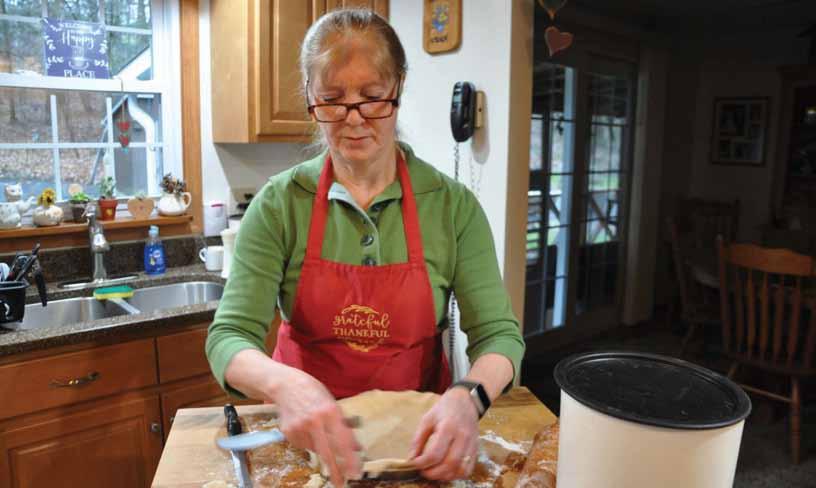
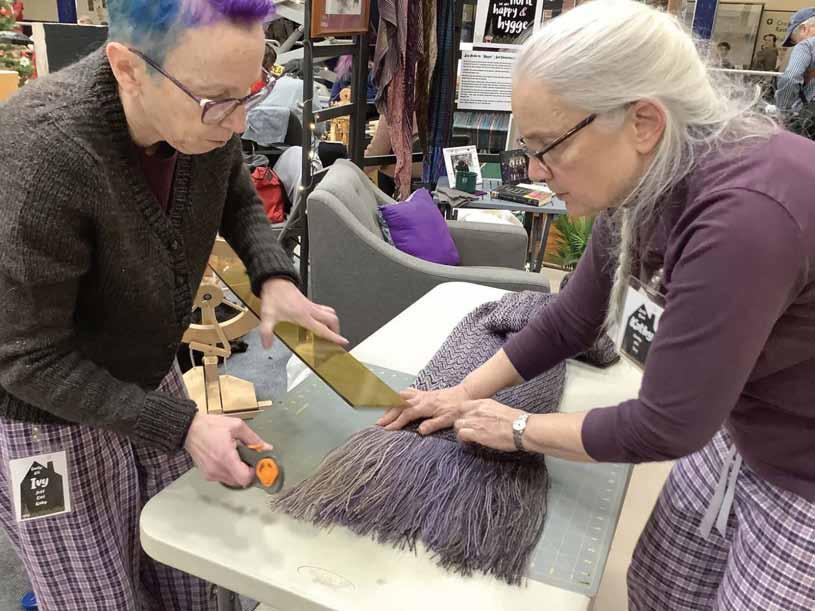
Baking is mostly a solo occupation, done in the home. Weaving is usually a solo activity, too. But at the Farm Show, weaving has been elevated to high drama in the popular “Sheep to Shawl” competition that has spectators on the edge of their seats. As the clock ticks down, the teams spin and weave as fast as their fingers can move. Will they finish in time?
“It’s a blur,” said Libby Beiler, leader of the Time Warp team, the perennial champion of the Sheep to Shawl competition. Teams have just two and a half hours to shear the sheep, card the wool, spin the thread, and weave a finished scarf. And despite the short deadline, that scarf is expected to be a work of art.
Libby Beiler, of Limestone Township in Montour County, has led her team to a first-place finish 12 times since 2003. Only Beiler and Carl Geissinger, the shearer, who comes from Reedsville, have been part of the team all those years.
The present group includes four others: Jeff Johnstonbaugh of Northumberland, who cards the wool, and three spinners, Katherine Dashner, of Woolrich, Susan Reel, of Masseyburg, and Emily Kephart, of Philadelphia, who create the thread for Beiler to weave into a scarf.

The whole team gets together about twice a year to practice their teamwork and to bring new members up to speed. “We can’t dilly dally around,” said Beiler. Participating teams are also required to do two other
competitions or demos during the year. This year they did one at the town park in Lewisburg and one at an alpaca farm in southern Pennsylvania.
It has been three years since Time Warp last competed at the Farm Show. The 2021 show was canceled, and they chose to skip the 2022 show over COVID concerns. So, the theme they planned for 2021, “Victory Garden Revisited,” will finally get to be used. “It’s still relevant,” said Beiler, “with COVID prompting so many people to plant gardens.”
The trip to the Farm Show requires some heavy lifting, with three spinning wheels, a 36” heavy wooden loom, shearing equipment, and a sheep to be transported. Only the carder, who uses a hand-held wire brush, can travel light.
Teamwork is the secret to Time Warp’s repeated success in this competition. The clock starts when the shearer begins to take off the wool, and no one can begin processing any of it until the sheep is totally shorn. Then the carder starts combing the wool and passing it on to the spinners. If he falls behind, the spinners fall behind, and then the weaver runs out of yarn.
The tricky thing, said Beiler, is that the three spinners “have to match each other in thickness and amount of twist in the thread.” The quality of the spinning is crucial. “You can’t hide bumps and irregularities and twists in the weaving,” she said, “no matter how hard you try.”
“Too tight twists in the yarn will make the finished shawl hang like an hourglass,” said Beiler. The finished product
is carefully examined by three judges, using four pages of criteria. “Just a point or two can determine the winner,” said Beiler.
The Sheep to Shawl event is always on Wednesday afternoons at 3:00 p.m. in the small arena. Later that evening is the shawl auction, where the day’s masterpieces are auctioned to the highest bidder. The price depends on the state of the economy and how many are bidding, according to Beiler. Prices paid for a Time Warp shawl have ranged from $1,200 to $2,900, which is split among the six members.
Fancy footwork draws spectators to the Farm Show’s large arena on Monday evening, where square dancers from throughout the state get to show their stuff. Usually, there are about 60 squares, each made up of eight dancers, dancing simultaneously to a single caller.
The Country Twirlers, based in Selinsgrove, draw members from Selinsgrove and Lock Haven and Middleburg and Mifflinville, Danville and State College. Started in 1980, it is the only square dance group still active in the immediate area. All year, they hold dances every Tuesday night.
Every Sunday since October their group of more than thirty dancers have been meeting at the home of Delavan and Shirley Whitenight near Mooresburg to learn the calls required at this year’s Farm Show. They plan to enter three squares, or 24 dancers, in the competition.
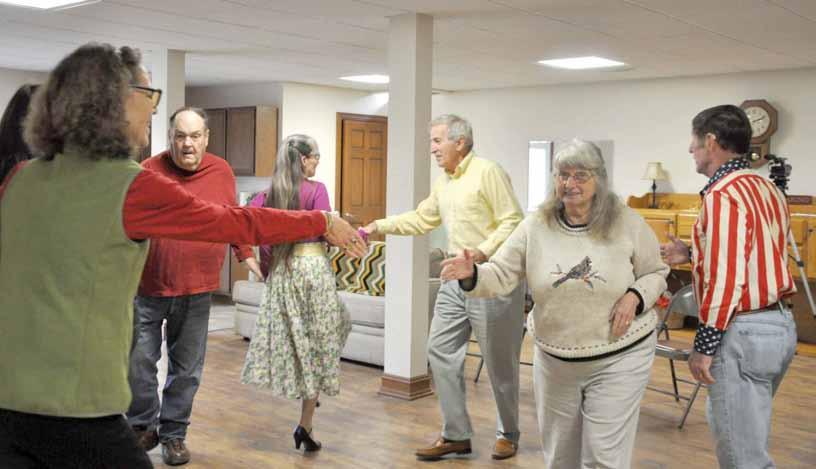
Glenn Stuck of Selinsgrove, the caller, says there are
about 100 calls you have to learn. In addition, there is the boys’ part and the girls’ part for each call. If the numbers don’t match up, a woman can take the man’s part or vice versa and dress the part.
For the Farm Show, teams planning to participate receive detailed information in advance about songs and choreography, and they work to perfect the five competition dances. One song on this year’s list is “This Land Is Your Land,” with a sequence of 17 calls to be learned. At practices, Stuck does the calling, but at the Farm Show, he will join one of the squares as a dancer. At practices, he also films YouTube videos, which he posts online for the group to study. Others often tune in, too, for help in learning the dances.
Glenn and Tina Stuck have participated in all but three Farm Show square dance competitions since 1977, and Delavan and Shirley Whitenight have competed for 20 years.
“I used to dance till I had blisters on my feet,” said Stuck. Both the Stucks and the Whitenights have three generations of their families doing square dancing. In fact, for the Farm Show, the Whitenights have enough dancers to make an all-family square.
The competition is open to dancers from five to 99, and there are three divisions, according to age. In 2016, the Country Twirlers coached a group of students from the Danville Middle School and took them to the Farm Show, where they won a Blue Ribbon. One of the boys, in seventh
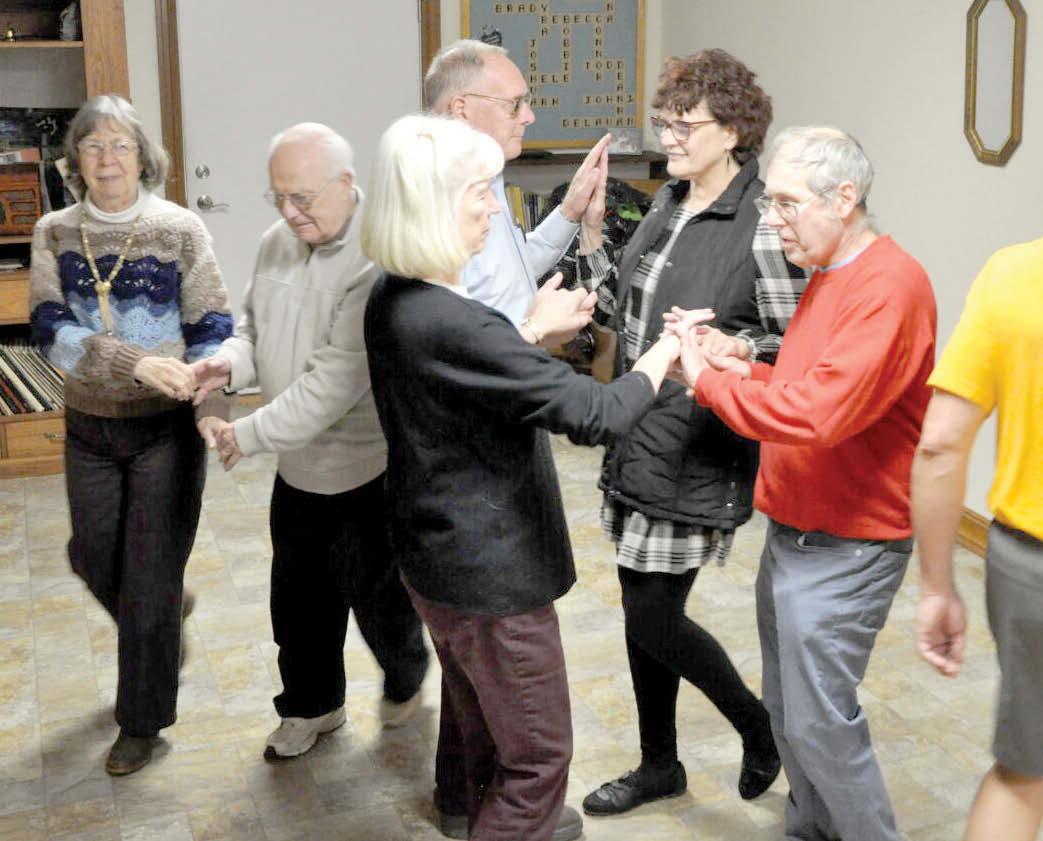
grade then, went on to dance regularly with the group for the next five years.
Multiple Blue Ribbons are handed out in the competition. With three judges watching 60 squares at once, they can’t be too picky, so “you get a Blue Ribbon as long as you don’t screw up too obviously,” said Stuck. “Really it’s more of a competition against yourselves.”
Amy Snover, owner of seven gigantic Percheron horses, is also into choreography.
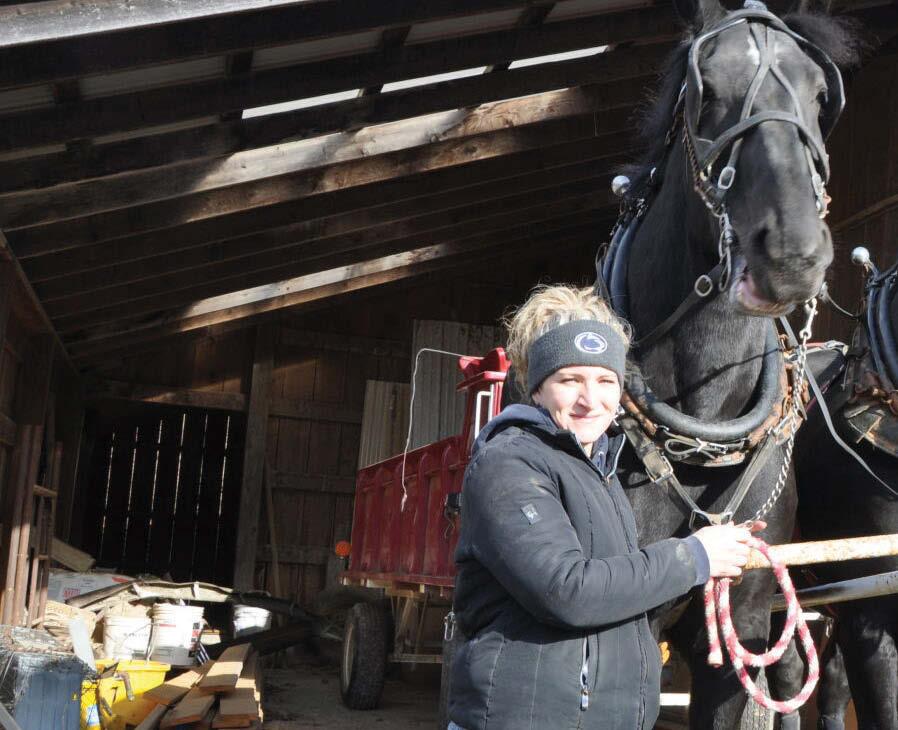
To ready her teams of horses to perform and compete in dozens of pulling classes at the Farm Show, she spends countless hours with them and with the seven teenage 4-H members who help her show them.
Draft horses are big, and to harness them, a step stool is essential. Irish, a 12-year-old Percheron gelding, is 6’3” at the shoulder. Snover’s tallest horse is 6’7”. At the Farm Show, they pull wagons, pull carts, and compete in conformation categories.
While moving, they are judged on how they look, how they move, how well matched they are, their style of motion, how well controlled they are, and how close to identical their motions and appearance are.
Matching pairs and getting them to work together is practically a full-time job, one Snover fits into her schedule as an ER doctor at Geisinger.
She takes her horses out in pairs to pull wagons at least twice a week. “Most people aren’t driving horses this time of year,” she said, “but we drive them until the Farm Show
is over in January.” The horses have a nice winter coat, so they don’t get cold, and they work up a sweat, but the drivers need a blanket to keep warm.
A usual ride is 2-3 miles on back roads and across fields, except when it’s too wet or during hunting season.
“Amy goes out in all weather,” said her helper and neighbor Jamie Bergey. “It’s all good except when you get rain in the face.”
Jamie’s son and daughter, ages 13 and 10, are part of Snover’s team of 4-H’ers who help her show the horses. They come by over the weekend to practice driving the carts and to learn showmanship. At the Farm Show, in one contest, they are given 30 minutes to decorate their horse and wagon and then present it to the judges.
Other showmanship classes allow the young handlers to
show they know how to present a horse. Here it is not so much the horse that is judged but the handler.
Halter classes are competitions where the horse itself is judged, on how well it meets breed standards, how it is put together, how it moves, and so on. This judging is run much like a dog show but on a much larger scale, with most horses weighing 2,000 pounds or more. Besides Percherons, draft horses include Belgians and Clydesdales.
Draft horse competition goes on for three full days, and then there are demonstrations of draft horse hitching and driving throughout the week.
Besides traditional pulling of carts and wagons, Snover’s team competes in some specialty classes, such as sideby-side racing and “feed scurry,” in which teams must load and unload bales of straw as they go. Snover
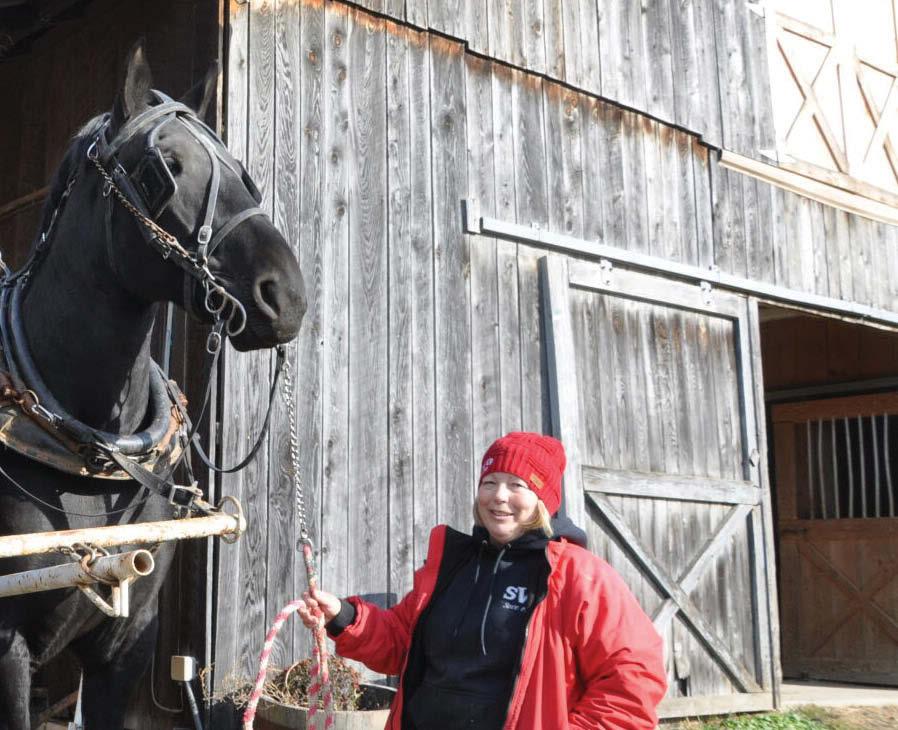
likes the unicorn race, which hitches a triangle of horses, the usual matched pair plus one in front. The front horse often doesn’t want to stay out front, so the driver has to encourage him. Snover’s “unicorn” horse is Rascal, a 6-yrold male gelding.
One class that rewards creativity is the “commercial hitch” competition, in which the traditional wagon is replaced by another conveyance, such as a hearse or a Cinderella coach.
All the 4-H members know how to harness and to drive. At the Farm Show, Snover reserves a few competitions for herself, including the four-horse hitch, the tandem classes, the feed scurry and the unicorn class.

When Snover takes her show on the road, it is quite an entourage. To the Farm Show, she brings five horses, about 15 people, and enough food and bedding to last the week. For the horses, that means 40-50 bales of hay and 10 bags of grain. Each horse eats almost an entire 40-lb bale of hay each day as well as 3-6 lb. of grain twice daily. Snover purchases some of the bedding straw once there, since she needs about 60 bales, enough to clean stalls twice daily, just like at home. Each horse will also drink about 20 gallons of water daily.
Her people need to eat, too, so she plans enough to feed a crew of 15 for the show weekend and the 5-6 that stay the rest of the week. “I bring anything that can be done in a crock pot plus an unbelievable amount of snack food!” she said.
The Pennsylvania Farm Show is open 8 a.m. to 8 p.m. daily, Jan. 7-13 and 8 a.m. to 5 p.m. January 14. Events can also be viewed from home on cable channel PCN-TV. For those without cable, a single-day subscription can be purchased at pcntv.com to stream events to you.
When the Farm Show ends on Saturday, Snover will load up her horses and drive them home to relax in a warm barn for the winter. The weavers might put away their looms and spinning wheels and take a break for a while. But the bakers will keep baking and the farmers will keep caring for their livestock and the dancers will keep dancing every week. And, with any luck, spring will be here before you know it.









 Story and photos by Cindy O. Herman
Story and photos by Cindy O. Herman
Andrew Miller would love to know there are two people in the D.C. area discussing plans for the weekend. One says, “We’re going to the Susquehanna River Valley,” and the other replies, “Oh, we love going there. There’s so much to do.”
Having grown up in Danville, then living 16 years in Washington, D.C., Miller, now the executive director of the Susquehanna River Valley Visitors Bureau (SRVVB), knows what he’s talking about.
In D.C., he experienced the client’s side of working with a visitors bureau when he managed conferences and programs for prominent business associations. When he returned home, he had a new appreciation for what the Susquehanna River Valley offers.



“I felt the best thing I brought to the job was looking at the area through fresh eyes,” he said. “I saw all the amenities of Snyder, Union and Northumberland counties and was just blown away. I just fell in love with Pennsylvania all over again.”
With an outsider’s perspective he gained new respect for familiar places, like the Joseph Priestley House, in Northumberland. Visiting there as an adult actually gave him chills.
“I can imagine Joseph Priestley walking out of his house and having the Susquehanna River there right in front of him,” Miller said. “It made me proud, and I wanted to share that experience.”






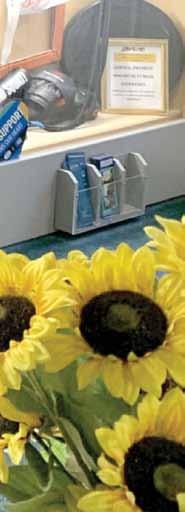



At the Susquehanna River Valley Visitors Bureau, Miller oversees a team of six full-time and two part-time members.
“We all share the same goal, which is to connect the consumer to our members (in Snyder, Union and Northumberland counties), and that drives us every day,” he said. “We’re marketing the area, driving the consumer to everyone else’s front door.”
Visitors spent $405 million in the tri-county area in 2019. The SRVVB markets to a crescent-shaped area spanning Canada, New England, Pennsylvania, Maryland and Northern Virginia.
Miller pointed to tourism’s impact on local residents. Knoebels Amusement Resort, in Elysburg, for example, is the park where thousands of people scream on the Phoenix, splash in the Crystal Pool and enjoy live
entertainment on the Bandshell.
But it’s also a place where numerous food vendors, landscapers, students and tradespeople are employed while local gas, food and lodging businesses also benefit from park visitors, and the SRVVB plays a part in encouraging tourists to give places like Knoebels a try.
“Just think if we went away,” Miller said. “There would be a hole if the tourist assets went away.”
Before working at the SRVVB, Miller was executive director of the Columbia-Montour Visitors Bureau, where he worked with business owners like Marty Walzer, who owned the Pine Barn Inn, in Danville.
“He was very effective at the job. I thought very highly of him,” Walzer said of Miller. “He was a real straight shooter and a really nice guy.”

Because he’s constantly searching for ways to expand the SRVVB’s partnerships, Miller is establishing satellite offices in places like Bamse Coffee and Roaster, in Shamokin, The Improved Milton Experience (T.I.M.E.) and Susquehanna University’s upcoming new bookstore in Selinsgrove. Don’t ask if he has more plans for the area. He does. Many.
He’s working with agencies to have the tri-county area designated as an International Biking Destination. Recognizing that outdoor recreation in our area has taken off, he keeps places like the Selinsgrove Disc Golf venue, the Anthracite Outdoor Adventure Area, R.B. Winter State Park and the Shikellamy Marina in mind for possible events.
At a recent meeting with local and state leaders, Miller paused to notice representatives from agencies like SEDACOG working with local businesses like Gilson Snow, in New Berlin.
“I just sat back. I was so happy,” he said. “There were so many people in one room connecting people and businesses together for the good of the community. You can’t operate in a bubble.”
“He’s the right person for the job,” Walzer said. “I think he’s done remarkably well. The counties that have him are fortunate to have him.”
Like with other river valley destinations, Miller sees visitors returning to the Susquehanna River Valley because they find more things they want to do.

“They want to explore all the colors of the quilt,” he said. And that’s what, he hopes, will make Central Pennsylvania a destination for visitors north and south of the area.
“It’s more about telling a story or creating an experience that will draw people here,” he said, then added, “Or they’re already here and we want to give them experiences and surprise the living daylights out of them.”
For more information, visit www.VisitCentralPA.org



ACROSS 1. President #16 was born in a ___ cabin. 2. President #1 knew ___ Franklin personally. 6. “Be __ Valentine,” said the president to the first lady. 7. Only men _____ for these two presidents. 10. A grand space like Fords Theater is a public _____. 11. Short for Abraham. 12. When traveling, these presidents would have stayed overnight at an ___. 13. One of the colors of the U.S. flag. 14. A kind of beer. 17. How #16 died. 20. President #1 never got to live at the _____________________. 23. The first name of the 1st president. 25. When #1 was at Valley Forge for the winter, it was really, really _____. 26. #16 wore a stovepipe ___. 29. President #16’s wife’s first name. 30. __ the people ... 31. Our 16th President. 33. #1 and #16 are _____ among the presidents.
DOWN 1. A U.S. president is the _______ of the people. 2. “Of the people, __ the people ... “ 3. Has a woman ever been U.S. president? 4. Presidents #1 and #16 identified as __. 5. President #1’s military title. 6. The 1st First Lady’s first name. 7. The home on the Potomac owned by the 1st president: Mt. ________. 8. First Ladies have ___ parties. 9. President #1 _____ at his home. 11. The first Vice President. 15. The 1st president. 16. State where the 16th president was born. 18. During a war, suppliers were often issued an ____ or a “promise to pay.” 19. Our 1st president could compute the ____ of a field. 21. A president has to have a strong sense of self or ___. 22. President #16 delivered the Gettysburg ___________. 24. Another name for a smile. 27. The Civil ____. 28. Women can vote _____. 32. President #16’s home state when he was elected.




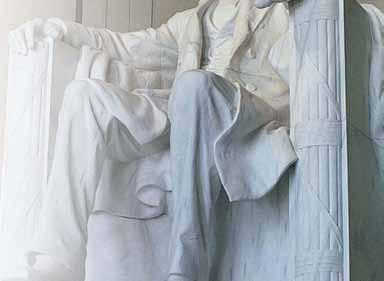



• The expression "to wear your heart on your sleeve" comes from the tradition of men fastening slips of paper with their beloved’s name on it to their shirt sleeve




• King Henry VII of England officially declared St. Valentine's Day a holiday in 1537
• Red roses were thought to be the favorite flower of Venus, the Goddess of Love
• Approximately 110 million roses (typically red) are sold & delivered in a 3-day period around Valentine’s Day










• In the late 1800s, Richard Cadbury introduced the first box of chocolates

• 73% of people who buy Valentine's Day flowers are men and 27% are women
• Roughly 190 million cards are sent every year in the U.S., excluding those sent by schoolchildren. If you include cards from children, the total number reaches 1 billion and teachers become the largest group of recipients.



• France's Duke of Orléans sent the first known Valentine's card to his wife in 1415
• Esther Howland sold the first U.S. mass-produced Valentine's Day cards in 1847
• Sending Valentine's cards used to only be associated with couples but now extends to family, friends, coworkers, etc.
• Most popular gifts exchanged between lovers include chocolates, flowers (typically roses), teddy bears and sometimes jewelry
• Traditionally, couples will go out for a romantic evening together, but other emerging traditions include Valentine's Day balls and couples-only or singles-only parties

Source: sendflowers.com


 Story by Cindy O. Herman and Jerri Brouse
Story by Cindy O. Herman and Jerri Brouse
Getting a loved one a special floral arrangement can be harder than you think, especially when it comes to romance. Sure, roses are a popular go-to for Valentine’s Day, but Valley floral designers are ready to help. Here are few of the Valley’s floral designers gearing up for the season:
SCOTT’S FLORAL, GIFTS & GREENHOUSES







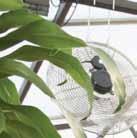
347 NORTHUMBERLAND ST, DANVILLE
SCOTTSFLORAL.COM — 570-275-4610



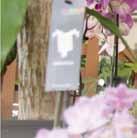





Scott Edwards was a recent graduate of ColumbiaMontour Vo-Tech, Bloomsburg, when he began his floral business in the basement of his parent’s rural home. Today, Edwards, his wife Judy and their daughters, Holly Edwards Hoffman and Heather Edwards Marks own and operate Scott’s Floral, Gifts & Greenhouse.

Edwards is an award-winning floral designer and has studied with master designers in Europe, Japan and Hong Kong. Several highlights of his career include his selection as a “member of the elite design team that created floral decorations for the Statue of Liberty Centennial Celebration in New York and the presidential inaugurations of George Bush and Bill Clinton,” according to Scott’sFloral. com.
“A dozen red roses are the most popular and most traditional arrangement for Valentine’s Day,” Edwards said. However, he noted that houseplants are selected by some as gifts and Scott’s Floral carries a wide selection.




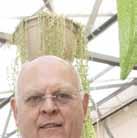
“I enjoy talking with people. Everyone is so different. It’s fun to learn where they’re from. Today a couple from Port Royal was in the shop,” Edwards said.
Preparing for Valentine’s Day begins shortly after the New Year, and Edwards suggests planning and ordering early is
the way to ensure you can send the gift you want to send to your Valentine.
Special opportunities and purchases for Valentine’s Day will be updated regularly on the website.
GILLY’S LILIES
370 CHESTNUT ST., MIFFLINBURG GILLYSLILLIES.COM 570-551-0806
For Sarah Wheatley, flowers were a tradition in her family during her childhood in northwest England and she worked in her uncle’s flower shop when she was just 10. She swept the floor and made cups of tea.

Wheatley, who refers to her flowers as stems said, “I enjoy working with unique stems and being creative with color palettes. I like to use my artistic ability and create with flowers as my medium for weddings and any occasions.”
Regarding Valentine’s Day, she said, “It’s mostly tradition. I feel that flowers and chocolate are the go-to choice. It’s classic, especially with roses. Again, traditional,” Wheateley said.
But new traditions may be in the making.
“We do sell a lot of plants, too, for Valentine’s Day,” Wheatley said. “That’s becoming more popular, especially with the younger generation.” Gilly’s also sell a lot of dried flowers. too.
Gilly’s Lilies first started in March 2016. The company name became an homage to her late mother Gill, “whom I lost in 2013 due to breast cancer. Gill loved flowers, and taught me some tricks of the trade during her lifetime. I have rekindled the passion we shared and gained experience developing styles for various events and media, while using my art and design background, I became the primarily self-taught florist that I am today.”
Wheatley said, “I love to tailor my work to what you like and who you are. The design will manifest itself specifically and uniquely to you.”
PRETTY PETALS & GIFTS BY SUSAN1168 PA-487, PAXINOS
PRETTYPETALSBYSUSAN.COM 570-509-2072
Primarily self-taught, Susan Adams-Brouse grew up with flowers. In 2014, when her position at another business was eliminated, she opened her shop, Pretty Petals & Gifts by Susan.
“I decided this is what I wanted to do until I retire,” she said.
Like the other designers, she encourages people to order as early as possible for Valentine’s Day.
The number one flower for Valentine’s Day? The red rose, of course, she said.
“Other colors are requested, too,” Adams-Brouse said, and “we also sell balloons, Victoria’s Candies from Hazleton, Teddy bears and cards.”
“We treat our customers individually and look for what they’re looking for.”
Holidays, especially Valentine’s Day, are a frantic blur
Our staff is Passionate about Educating ourclients. We want to help you make informeddecisions about your Project.
What do you need to know?
Meck-Tech, Inc. is afamily-ownedcompany. We provide engineering, drainage,landdevelopment, and subdivision design for residential,commercial,industrial and municipal clients. Surveying servicesinclude: boundar y, topographic, andALTA surveys;construction stakeout,as-builts and (flood)elevation certificatestoo. Call us today.


in the flower business, but Adams-Brouse treasures the feedback from her customers.
“People call and say, ‘I got your bouquet. It’s beautiful,’” she said. “Or they say the recipient of the flowers they bought really liked them.”
THE BLOOMING ROOSTER 30 ELM ST, MILTON
THEBLOOMINGROOSTER.COM — 570-331-8793
Susie Gearhart didn’t always want to be in the floral business. In fact, after spending much of her early years helping out at her mother’s flower shop, A. B. Blossoms, in Margate, N.J., scrubbing buckets and cutting chicken wire, she didn’t want anything to do with flowers for a long time.
It wasn’t until her daughter, who lives in Milton, needed help getting through her final semester of college that Gearhart decided it was time to get back into the world of flowers and plants. She quit her job and started a small business working out of her daughter’s basement while she also helped raise her grandchildren.

At first Gearhart just did weddings and events under the name A. B. Blossoms, Too. Then, a few years ago, she opened her shop. The name is a twist on a nickname she had as a child due to her long, flaming red hair.
Since returning to life as a florist, business is, well, blooming. While weddings keep Gearhart busy year round and the holiday season keeps her on her toes, the busiest
times of the year are Valentine’s Day and Mother’s Day.
“People like to pick things out face to face,” she said. Unless, of course, they aren’t able to. In those cases, online ordering is also available on her website.
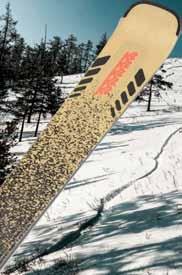
Gearhart herself enjoys meeting her customers in person and learning more about them in order to make their order just right.
“I always try to talk about interests and hobbies of the person the arrangement is for,” she explained. “So I can design a piece just for that person.”
“Hearing someone say ‘Oh my gosh, it’s beautiful,’ is the best feeling,” she said.

317 EAST BOROUGH ST, ISLE OF QUE, SELINSGROVE RINESFLORIST.COM 570-374-1953



Ed Auman, owner of Rine’s Florist, was a child, when he helped his great-grandmother, Esther Prettyleaf Brouse, arrange fresh flowers in soup cans to sell to customers. His greenhouse is named in memory of her.
Auman worked at Haddon’s Flowers and Greenhouse in high school and where he was encouraged to attend Hixon’s School of Floral Design in Ohio. As an 18 year-old, he was applauded and encouraged by the older students in his class.
When he was offered a job in Akron, Ohio, he entered the flower business and never looked back. Eventually, he accepted a position as a florist in Lewisburg. Then, George
NottinghamVillageCountryHomesor NottinghamVillageApartmentStyle RetirementCenterLiving.



Enjoylifeinoursafe,secure,Oasisinthe countrysideofCentralPennsylvania.

TheRetirementCenteroffers11differentstyles ofapartmentstosuityourneeds.Inthe RetirementCenter,wefeaturetheabilityto providebothIndependentLivingandPersonal Care.OurabilitytoofferPersonalCare,with carecustomizedandspecifictoeachresident’s individualneeds,allowsforourresidentsto stayintheirapartment,evenastheirneeds maychange.





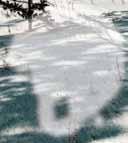
OurCountryHomesareavailablewith1,2,or3 bedrooms,andallwithenclosedattached garages.Newlyrenovatedhomesblendinto ourpeacefulcountrysetting,surroundedby nature,butclosetoeverything.Withlow monthlyfeesandmaintenancefreeliving, comeenjoytheCountryHomeLifestyleat NottinghamVillage.

and Betty Rine told him they wanted to retire and asked if he would take over their business on the Isle of Que. That was in 1995.
For Valentine’s Day, flower orders begin as early as Dec. 28. Like every other business, Rine’s must account for supply chain issues, especially when considering that flowers are not the kind of product that can sit on a shelf waiting to be used.
Auman observed, it’s tough to say how red roses became the go-to flower for Valentine’s Day, but the color itself has to have something to do with it.

“Red roses are the No. 1 seller for Valentine’s Day. It’s called the flower of love.”
“Twenty-five years ago we sold a lot of boxed roses,” he said, but today, “Everybody loves clear glass arrangements. It’s more of a presentation.”
“I think red is synonymous with Valentine’s Day,” Auman said, pointing to red hearts, decorations and candy boxes.
Rine’s Florist has been a mainstay in Snyder County for 107 years.
For a complete listing of all of the floral shops in the Valley, please visit dailyitem.com

Across the U.S. and in countries around the world, St. Valentine’s Day is celebrated on Feb. 14. Roses, candy, special dinners and lots of cards will be shared with affection. But, how, when and where did this holiday begin?










In ancient days, Februa was a Roman cleansing ritual. It was also — probably — the very beginning of what we now know as Valentine's Day. Februalia, a month-long cleansing festival became part of Lupercalia, a pagan festival meant to guarantee fertility and bounty for the following year, according to history.com.
Lupercalia (Latin for wolf) had two parts. The first is the legend of the orphans, Romulus and Remus, who were raised by a she-wolf in a cave overlooking the land that would become Rome.
Young men began the Lupercalla Festival Run at that cave. They carried strips of blood-soaked goats and dogs that had been sacrificed to the god Lupercus, the Roman god of agriculture and shepherds. Then, the young men would run through the streets carrying those strips of the sacrificed animals. If you were a young woman who was struck with one of those "romantic" tokens, it was believed you would be guaranteed the birth of a healthy child in the new year. The runners would also target crops and fields with the hides to ensure good crops in the season ahead.
It is possible, that in an effort to Christianize the celebration of Lupercalia, the church seized upon the celebration of a saint as a preferable origin of the day.



From the third century through the 19th century, there were at least 10 to 12 saints named Valentine. Some of them were martyrs to their faith, but no one can definitively identify which St. Valentine gave the day its name.
According to britannica.com, there were several Christian martyrs named Valentine. The day may have taken its name from a priest who was martyred about 240 AD by the emperor Claudius II. According to legend,





the priest signed a letter to his jailer's daughter, 'from your Valentine.'" Some accounts say he had befriended her and healed her from blindness — one of the reasons he was declared a saint. Other accounts say it was St. Valentine of Terni, a bishop, for whom the holiday was named, though it is possible the two saints were actually the same person. Another legend states that one of the St. Valentines defied the emperor’s orders and secretly married couples to spare the husbands from war.
THE TRADITION GREW
Formal messages of love appeared in the 1500s, and by the late 1700s commercially printed cards were sent. "The first commercial valentines in the U.S. were printed in the mid-1800s. Valentines commonly depict Cupid, the Roman god of love, along with hearts, traditionally the seat of emotion. Because it was thought that the avian mating season begins in mid-February, birds also became a symbol of the day. Traditional gifts include candy and flowers, particularly red roses, a symbol of beauty and love," according to britannica.com.

FLOWERS IN THE MIDDLE OF WINTER
Candy is a relatively easy gift to buy in the middle of February — whether you make your own or buy a heart-shaped box filled with chocolates from one of the talented candy-makers in the Valley, candy is always a thoughtful gift. And, Valentine cards are plentiful and easy to locate and purchase.
People with a proverbial green thumb can grow plants that flower in winter, but many of us aren't that talented. In winter, flowers can be grown in a greenhouse. More than a hundred years ago, trains transported masses of flowers to cities where they were offered for sale as a token of affection on Valentine's Day.
Today floral designers source flowers from across the United States, Canada, Holland and South America.




Local floral designers can be counted on for flowers for many occasions, but Valentine's Day is one of their busiest times of the year.







 — Jean Knouse/Inside PA
— Jean Knouse/Inside PA


JAN. 7 14
The 107th Farm Show
When: Hours vary — check schedule for times
Where: Pennsylvania Farm Show Complex and Expo Center, 2300 N. Cameron St., Harrisburg, PA 17110
More information: plan your visit by logging onto https:// www.farmshow.pa.gov/pafarmshow/Pages/Scheduleof-Events-.aspx. Please note: the schedule is subject to change.
JAN. 14
A Contra Dance!
When: 7 – 10:00 p.m.
Where: Donald Heiter Community Center, 100N 5th Street, Lewisburg.
More information: Features State College’s Bruce Young calling, and live music by Strath Hanna. Basic review at 7 p.m. Newcomers, all abilities and singles are welcome. Wear comfortable clothes, and soft soled, non-marking shoes. Admission fee and COVID guidelines.
FEB 3 AND 4
Heart of Lewisburg Ice Festival
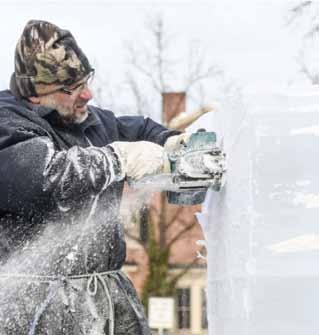
When: Activities throughout both days Where: Downtown Lewisburg More information: Ice sculptures, Sip and Stroll tickets at Lewisburg Downtown Partnership while you Sip and Stroll and shop through the downtown. On Saturday, Frosty 5K, children’s activies at the Children’s Museum, Polar Bear Plunge at 2 p.m., and many other activities throughout the day. Visit Lewisburgpa.com
FEB. 26
SnowFest 2023
When: 12 - 4 p.m.
Where: R. B. Winter State Park, Rte 192, More information: Silent auction, bids must be placed by 3 p.m. Activities throughout the afternoon. The Mid Penn Trailblazers will also be holding their Annual SnowFest 3.5 Mile Trail Race at 1 PM. Visit Snowfest on Facebook.
Events that are scheduled in January and February are always held subject to the weather. Additionally, during the Holiday Season, many events for late January and February are still in the planning stages and not available for publication in Inside PA. However, updates will be published online at dailyitem.com.






Whether you live in Illinois, Florida, Iowa or Pennsylvania, four out of every ten people, across the nation, have ancestors who entered the United States through Ellis Island.
During the 1760s, Ellis Island was known as Gibbet Island. It was famous as the place where convicted pirates were hung.
Before 1890, U.S. immigration was regulated by each state. Pennsylvania’s port of entry at that time was Philadelphia.
According to history.com, Europe in the 1800s was experiencing “political instability, economic distress, and religious persecution — all of which fueled the largest mass human migration in the history of the world.” Smaller immigration centers like those in Philadelphia and New York couldn’t handle the influx of immigrants so the Federal government created a new immigration station on Ellis Island.
On Jan. 1, 1892, a young Irish woman named Annie Moore was the first immigrant processed at Ellis Island
Over the next 62 years, more than 12 million immigrants would arrive in the U.S. through the grand hall at Ellis Island. However, after 1924, the only people brought were those who had paperwork problems, war refugees and displaced persons needing assistance. Around that time,
U.S. embassies were established around the world and the immigration process began there. However, after World Wars I and II, prisoners of war were also housed on Ellis Island.

In November 1954, the last remaining detainee was released and Ellis Island was officially closed by the U.S. government. Although the buildings were deteriorating badly, the island was reopened in 1976. With the approaching 100th anniversary of the Statue of Liberty in 1986 and Ellis Island in 1992, President Ronald Reagan asked Lee Iacocca, Chairman of Chrysler Corporation, to head a private fundraising effort to restore both landmarks. Americans responded to the request with generosity and hundreds of millions of dollars were raised. Ellis Island was reopened in 1990 — two years ahead of time. Today, visitors arrive at the island and enter through the beautifully restored Great Hall — where many of our Pennsylvania ancestors entered the United States a hundred years ago.
A trip to the Statue of Liberty and the “Ellis Island National Museum of Immigration” should be on every Pennsylvanian’s Bucket List since more than 40% of those of us who live in the Keystone State have an ancestor who first stepped on American soil at Ellis Island.
Sources: Statueofliberty.org and History.com






